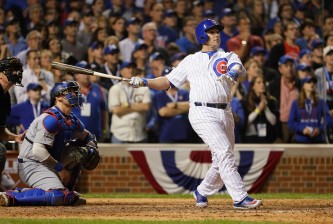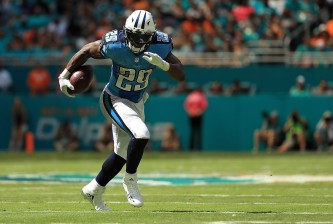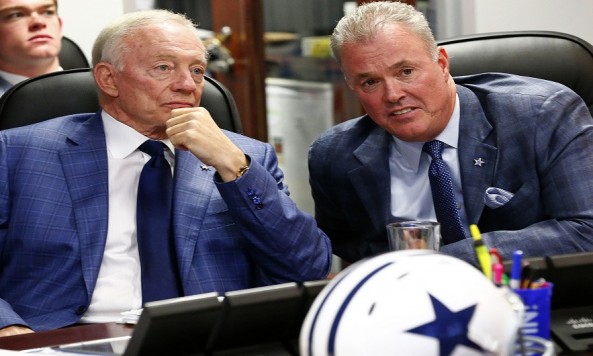Fans and media alike were glued to their TV sets during the 2014 NFL Draft, as they were witnesses to numerous surprising moves, emotional reactions and shocking picks. Much uncertainty surrounded one of the deepest and most talented draft classes of all-time, and no one knew what to expect heading in.
And the first round was especially entertaining. It was filled with action—from the Johnny Manziel Is Still Drinking Water Saga, to an unpredictable, late run on defensive backs. It was the most-watched Day One in the draft’s history, drawing in 32 million total viewers.
With the free agency frenzy as well as the draft now in the books—wherein each team attempted to fill their biggest positional voids—NFL teams can now begin to look toward and plan for the upcoming season. They’ll soon begin minicamps to see what their new acquisitions have to offer on the field.
After an entertaining weekend, what can we take away from the big event? Read on to find out.
2014 really was the deepest wide receiver draft class since 1996—and possibly of all-time.
Twelve (!!) wide receivers were taken in the first two rounds.
This particular class was loaded with big, physical receivers that also possess great speed. They’re dynamic playmakers that can rack up yards after the catch by breaking tackles or utilizing excellent straight-line speed in the open field.
Teams like the Jaguars even took WRs with back-to-back picks in the second round. And the Jets, later, did the same in round four. Many of these receivers can start immediately and were drafted by teams who were looking to make their offense a bit more explosive.
Dominant wide receivers that can consistently get separation are now valued highly. This is proof it really is a full-blown passing league.
Running backs are no longer held in the highest regard and aren’t even considered by general managers until Day Two and beyond.
No running backs were taken on Day One. But eight were selected in Day Two.
Heck, we saw 53 players drafted until the first running back was even taken off the board!
Teams are now addressing the position in later rounds—focusing on underrated rushers that don’t have as much “mileage” and still have fresh legs when they get to the pro level. Organizations looking for featured backs covet durability, and they’d rather have a guy that can stay on the field for consecutive downs with the ability to absorb plenty of hits.
The cost of running backs (contract-wise) has dropped, too. So teams can afford to draft a running back and stash him away for a season or two.
…But tall defensive backs that can win the ball in the air are gaining value and certain teams can never have enough depth at the position.
Wrap your head around this: Defensive backs were drafted more than any other position in this year’s event.
In fact, 53 defensive backs heard their names called this weekend. That’s 20.7 percent of all players that were drafted.
Football fans recently watched the Seattle Seahawks completely shut down the Denver Broncos, who fielded one of the most high-powered offenses of the last decade, in Super Bowl XLVIII. The Legion of Boom, with its secondary comprised of big, physical but also athletic defensive backs, blanketed the Broncos WRs with tight man coverage. Manning’s job was much more difficult when his receiving corps struggled to get separation on nearly every down, and Seattle cruised to victory.
And maybe that’s why nine defensive backs were taken on Day One. And tall ones, too. Eight of nine feature frames of 5’11” or more.
With more and more NFL teams fielding pass-heavy, spread-based offenses, pass defenses are now on the field for more than 60 percent of snaps in each game. “Ground and pound” is becoming a thing of the past, and in game-planning, teams are focusing on stopping the pass first and foremost.
And secondary depth is powerful, with more and more teams consistently trotting out nickel and dime packages. In fact, 45 percent of snaps in the league last season featured defenses operating in a nickel personnel package. The old “run-run-pass”offensive gameplan is a thing of the past, and defensive coordinators know it.
The deeper the draft, the less trades that occur in the first round.
There were only five trades made on Day One.
But overall, the number of trades that occurred were on par with what analysts had initially projected. There were 27 in this year’s draft. And on average, there are 26.8 trades per each draft, according to ESPN’s John Clayton.
With all the talent available, teams couldn’t afford to pass on filling positional voids with players that could potentially start immediately. And they didn’t want to give up numerous picks in the later rounds in order to trade up. The risk just wasn’t worth the reward.
Look at the Falcons, for example. They were rumored to be big players to potentially trade up into the No. 1 spot for DE Jadeveon Clowney. But it never panned out, and a lot of that buzz fizzled out once Thursday rolled around.
The “draft a quarterback early and often” narrative is a thing of the past.
Only one QB was taken in the first twenty picks (Blake Bortles) of the draft, and it was by a team that has no problem “reaching” if they have their sights set on “their guy.”
And only three quarterbacks were taken on Day One, with Teddy Bridgewater barely making the cut, until the Vikings traded up to take him with the final pick of the first round.
Remember when QBs Tom Savage and A.J. McCarron reportedly received “first-round” grades from anonymous scouts? NFL teams obviously don’t, as both of these signal-callers weren’t selected until Day Three (rounds four and five). And QB Zach Mettenberger, who many had going early in Day Two, wasn’t drafted until round six.
TSD’s Thomas Emerick recently spoke with former Broncos GM Ted Sundquist, and published a piece titled “Why NFL teams are becoming hesitant about drafting a franchise QB early” just 10 days ago. It’s clear he was onto something, as the data from this year’s draft backs it up.
Offensive linemen may be labeled “safe picks”, but they’re still highly-valued and targeted early.
One-quarter (five) of the first 20 picks taken in the draft were offensive linemen. Many of them are versatile and can play anywhere on the offensive line, so they can potentially start immediately at guard and then move over to tackle, if needed.
When filling key needs, if teams need to shore up their offensive lines and keep their quarterbacks upright, the “safe” pick is easily justified. Selecting offensive linemen in the early rounds, especially the top-tier ones, takes scrutiny away from GMs and also addresses weak areas on the depth chart.
Fans may applaud flashy picks, but when general managers reach and take a “sexy” prospect in the first round. it’s a “boom-or-bust” move and can potentially blow up in their faces. There are times in which prospects had their stocks inflated due to being products of a system that benefited them greatly. Or maybe they played in a weak conference where they could dominate their competition. But in general, it’s much easier to evaluate offensive linemen, and figure out what their ceiling or floor actually is.
Teams are certainly focusing on solidifying play in the trenches now, as 45 offensive linemen were drafted overall during the 3-day affair.
The majority of general sports fans watch the draft. And the first round has become “must-see TV.”
With an average of 12.4 million viewers on NFL Network and ESPN, 2014’s draft was the most-watched Day One of all-time. It garnered the second-highest rating on Thursday night, with only The Big Bang Theory drawing in more viewers (Well, it is a great show!).
It was the highest-overall-rated draft of all-time, drawing in an average 2.7 U.S. rating for the three days combined on ESPN and ESPN2 alone. This is a 31-percent gain from last season.
The bad news is that this could be a sign that the draft likely will, once again, take place in May in the coming years. And fans and analysts alike probably aren’t too happy about that possibility. Hopefully the NFL will at least retain Radio City Music Hall as the location to house the event, but that’s still yet to be determined.























